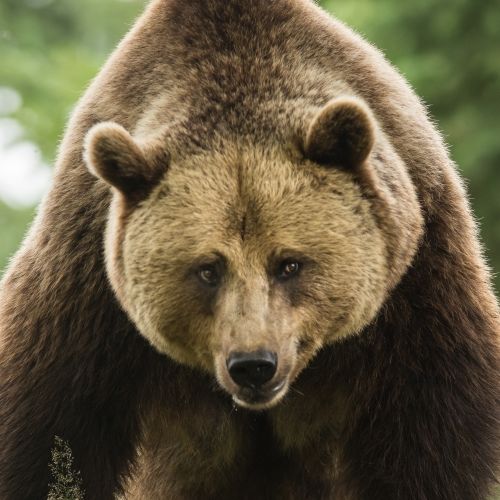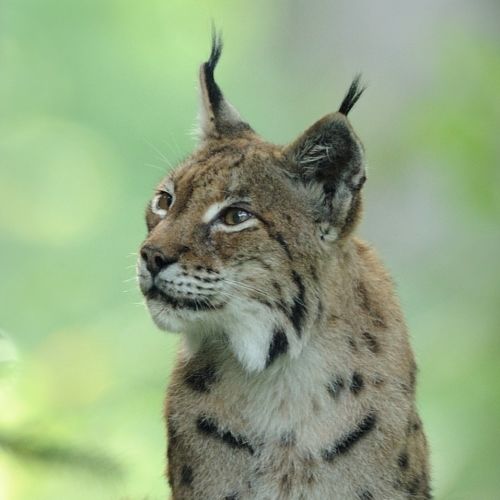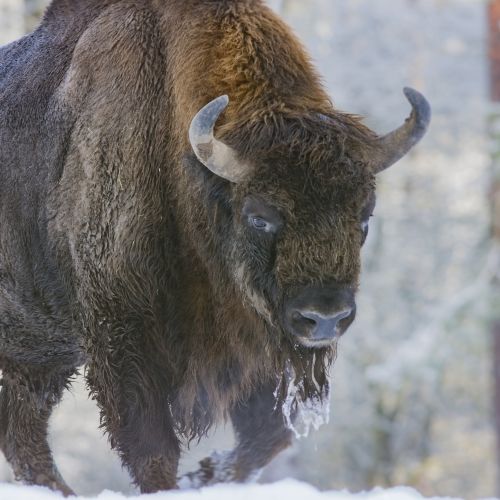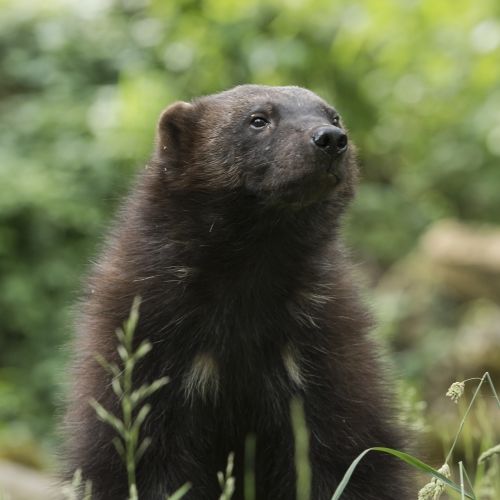The Heck cattle
It’s that magical time of day when the light turns golden and dances with the slowly rising morning mist. On the outer edges of the vast grasslands, tranquil shadows are peacefully grazing. Watching these massive dark beasts with curved horns breathing wisps of steam into the air that then form intricate and delicate patterns, is truly fascinating. The herd, that only moments ago seemed far away, has suddenly gotten close. While some of the Heck cattle are happy to graze peacefully, others enjoy a high-spirited gambol in the meadows.

A reconstructed species
The aurochs is the ancestor of the bovid family. This prehistoric animal was frequently portrayed on cave walls by primitive man. The species was hunted to extinction, and the last aurochs was killed in Poland in the 17th century. In the early 20th century, two German biologists, the Heck brothers, set upon themselves to recreate the species and managed to create a new species called “Heck cattle”, which bears a strong resemblance to the prehistoric aurochs. It is the result of crossbreeding between the Corsican cow (their colour), the Spanish fighting combat bull (their size), Camargue Cattle (their horns) as well as number of other rustic cow species.
Heck cattle are a hardy, rustic breed that are easy to care for and have low nutrient requirements. It is massive and robust creature that can live outside all year round, and they can cope with temperatures as low as -30 degrees. Nowadays, Heck cattle have been domesticated and are used to prevent spontaneous reforestation but also to maintain delicate habitats.
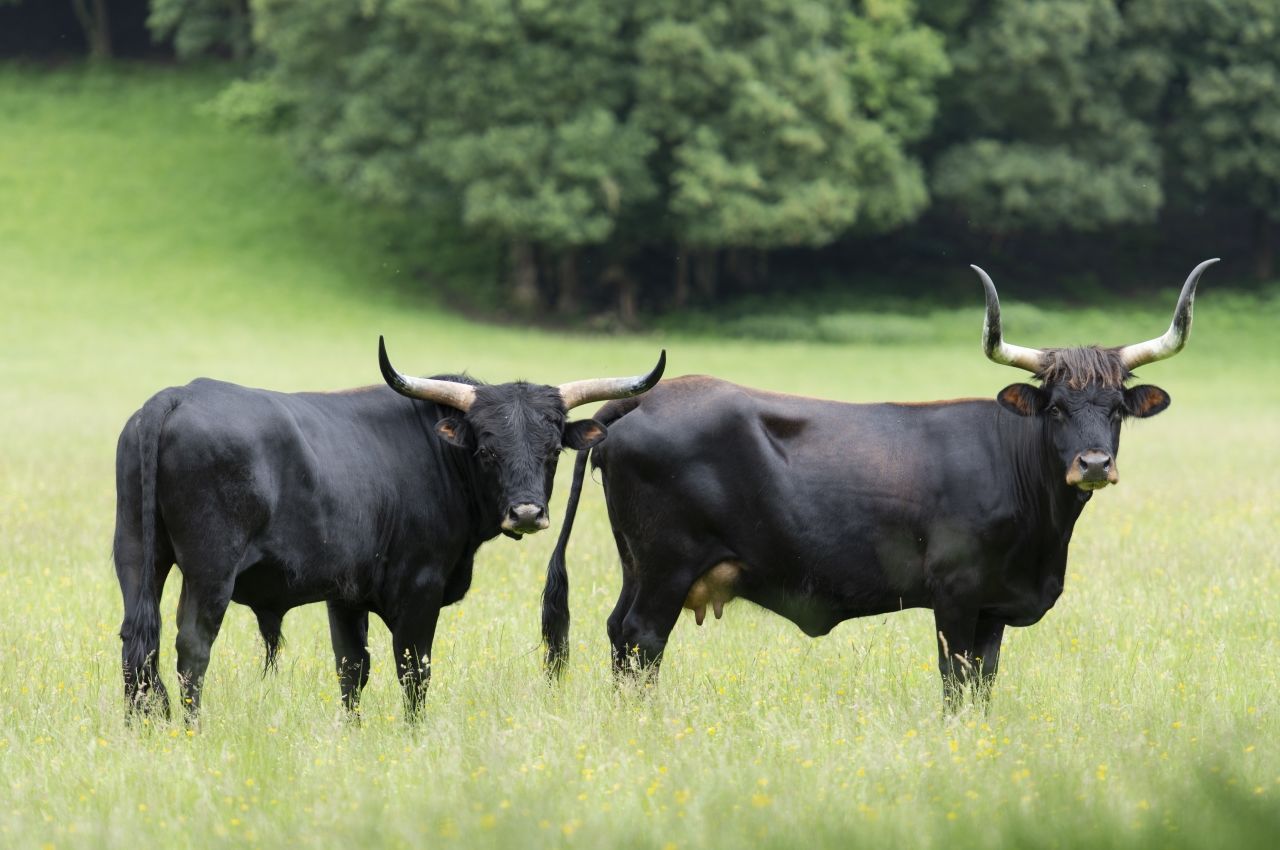
Social life
Heck cattle live in mixed herds. The rutting period is not limited to a particular time of year. After a 284 day gestation, the female gives birth to one calf.
Did you know that?
The aurochs is one of the iconic figures of the cave of Lascaux. The resemblance between Heck cattle and the prehistoric aurochs portrayed in Lascaux is only partial. According to scientists, the prehistoric aurochs was a lot bigger (it measured about 3 m long and was 2 m high) and also a lot heavier (it weighed up to 900 kg). According to the laws of genetics, it is impossible to recreate an extinct species. Heck cattle is a new species that probably bears a strong resemblance to the prehistoric aurochs.
Nowadays, Heck cattle can be seen in several spots all over Europe. Some of them have been reintroduced in their natural environment or on uncultivated soils, which prevents spontaneous reforestation.
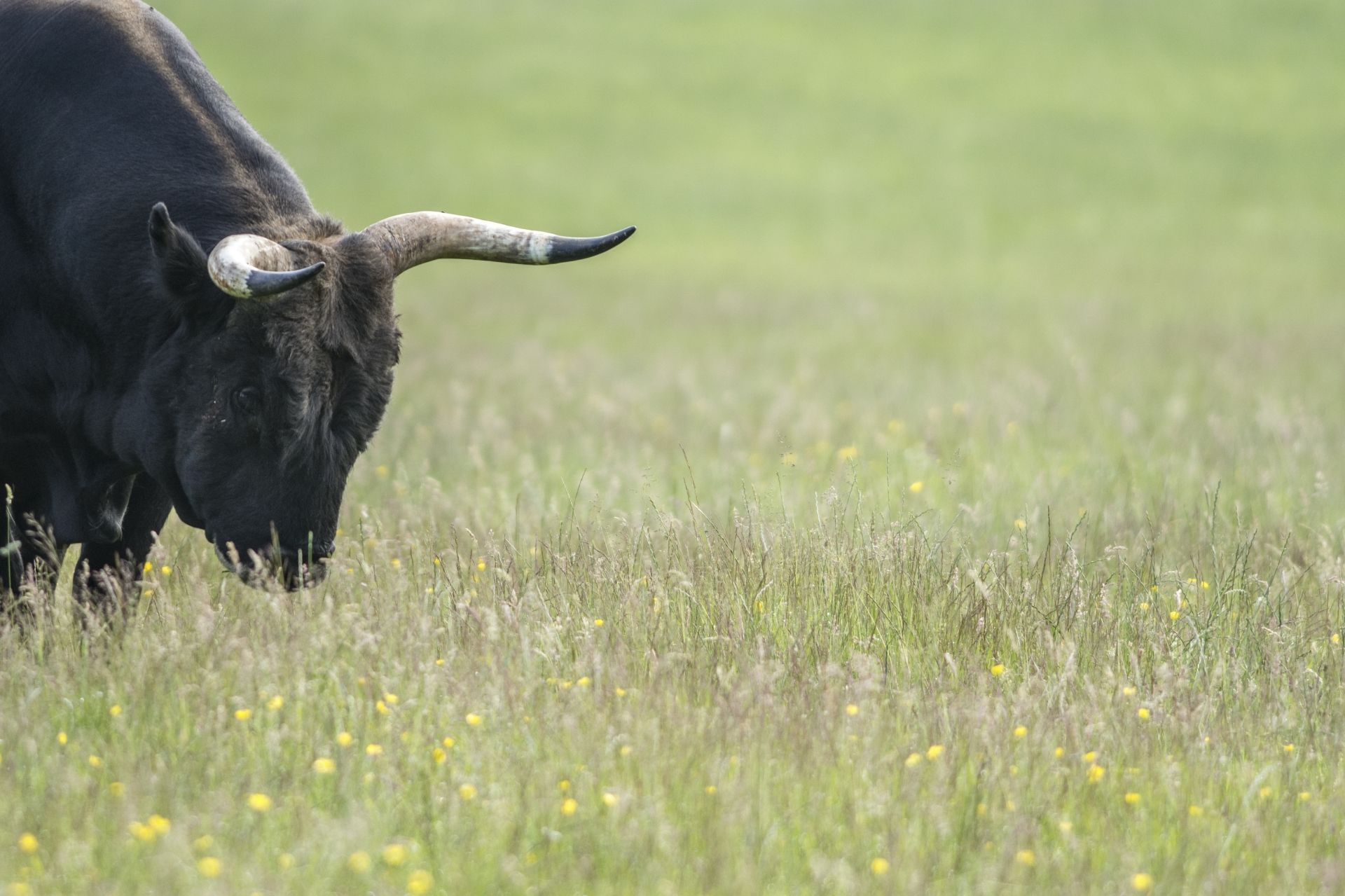
Discover the European Big 5
The bison, the wolverine, the wolf, the lynx and the brown bear
